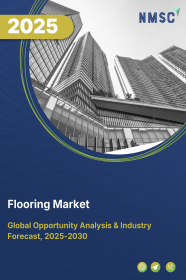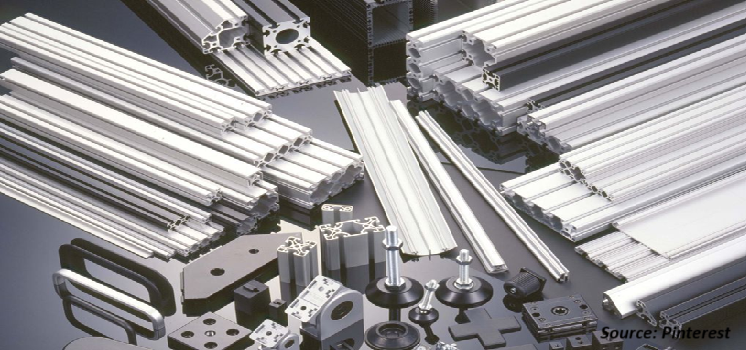
New Interconnect Materials Market by Materials (Organic Substrates, Ceramic Materials, Polymer Materials, and Metallic Materials), by Application (Semiconductors, Printed Circuit Boards (PCBs), Optoelectronics, and Automotive Electronics), and by End-User (Semiconductors, IT & Telecommunications, Aerospace & Defense, Healthcare, Automotive, and Others) – Global Opportunity Analysis and Industry Forecast, 2024–2030
US Tariff Impact on New Interconnect Materials Market
Trump Tariffs Are Reshaping Global Business
New Interconnect Materials Market Overview
The global New Interconnect Materials Market size was valued at USD 7.95 billion in 2023 and is predicted to reach USD 17.16 billion by 2030 with a CAGR of 11.6% from 2024 to 2030.
The new interconnect materials market also known as high-speed interconnects industry refers to the substances used to establish connections between electronic components in various devices. These materials operate by facilitating electrical conductivity for enhancing the performance of semiconductor devices while minimizing resistance and thermal temperature.
The common applications include integrated circuits, printed circuit boards, and various electronic packaging solutions across industries such as consumer electronics, telecommunications, and automotive. As compared to traditional interconnect materials, advanced options provide superior conductivity and durability that makes them ideal for high-performance applications in increasingly miniaturized and complex electronic systems.
Market Dynamics and Trends
The rising automotive sector, coupled with the growing demand for autonomous vehicles, drives the demand for advanced interconnect materials to ensure seamless communication and maximize performance across electronic components in the vehicle. As automakers incorporate complex electronic systems for self-driving technology, they require efficient and high-performance materials to ensure smooth communication between these systems.
As per the latest report published by the European Automobile Manufacturers Association (ACEA), around 76 million units of cars were produced globally in 2023 with a growth of 10.2% from 2022. The surge in car production drives the demand for advanced materials including interconnect materials for vehicle efficiency.
Moreover, the expansion in the semiconductor sector fuels the growth of the market as the semiconductor industry advances with increasingly powerful and compact chips, the need for efficient and reliable interconnect materials becomes important. These materials ensure proper communication and signal transmission between components, that is essential for the functionality of modern electronics.
As per the latest report published by the Semiconductor Industry Association (SIA), the global semiconductor industry sales accounted for USD 46.4 billion in April 2024 as compared to USD 40.1 billion in April 2023, representing an increase of 15.8%. The rising semiconductor sector accelerates the demand of interconnectors to maintain quality and functionality of complex circuits.
Furthermore, the rising demand for advanced military systems, such as unmanned aerial vehicles (UAVs), missile defense systems, and secure communication networks drives the need for advanced interconnect materials to ensure reliable communication, enhance system performance, and withstand harsh operational environments. As these systems become more complex, the demand for high-performance materials continues to grow, fueling the expansion of the market.
As per the latest report published by the Stockholm International Peace Research Institute (SIPRI), the global military expenditure accounted to USD 2443 billion in 2023, representing a growth rate of 6.8% from 2022. The increasing military expenditure highlights the innovations in interconnect materials for supporting durability and stability in military applications that further propels the growth of the new interconnect materials market growth.
However, the development of interconnect materials emits harmful gases and toxic byproducts that contribute to air pollution and health risks, thereby hinders the new interconnect materials market expansion.
On the contrary, the integration of graphene-based materials is anticipated to create future opportunity for the market due to its superior electrical conductivity, light weight, mechanical strength, and flexibility compared to traditional copper-based interconnects. This innovation led to enhanced performance in electronic devices, enabling more efficient energy transfer and reducing overheating issues.
Market Segmentations and Scope of the Study
The new interconnect materials market report is divided on the basis of materials, application, end-users, and region. On the basis of materials, the market is divided into organic substrates, ceramic materials, polymer materials, and metallic materials. On the basis of application, the market is segmented into semiconductors, printed circuit boards (PCBS), optoelectronics, and automotive electronics. On the basis of end-user, the market is classified into semiconductors, IT & telecommunications, aerospace & defense, healthcare, automotive, and others. Regional breakdown and analysis of each of the aforesaid segments include regions comprising North America, Europe, Asia-Pacific, and RoW.
Geographical Analysis
North America dominates the new interconnect materials market share and is projected to maintain its dominance throughout the forecast period due to the expansion in military sector in the region. The rising military expenditure drives the demand for advanced technology within the military sector, driving the demand for advanced interconnect materials, as they are required to withstand extreme temperatures and operate efficiently during critical missions.
As per the latest report published by the Stockholm International Peace Research Institute (SIPRI), the U.S. military spending accounted for USD 877 billion in 2022. Thus, the expansion in defense applications accelerates the growth of the market for specialized interconnectors to manage advanced communications.
Furthermore, the rising healthcare expenditure within the region propels the growth of the market as increased funding for advanced medical devices and technologies such as MRI machines, patient monitoring systems, and others drives the need for reliable and efficient interconnect solutions.
As per the latest report published by the Canadian Institute for Health Information, the total healthcare expenditure in Canada accounted for around USD 259 billion in 2023, representing 12.1% of Canada’s gross domestic product (GDP) in 2023. This investment in healthcare innovation increases the demand for high-performance materials for enhancing the functionality and durability of medical equipments.
On the other hand, the Asia-Pacific region is expected to show a steady rise in the new interconnect materials market demand. The increasing adoption of electric vehicles (EVs) in countries such as China, Japan, India, and others in the region is driving the demand for high-performance interconnect materials. These materials are essential for reliable power transmission, thermal stability, and durability in EV systems, enabling the effective functioning of advanced technologies.
As per the latest report published by the International Energy Agency (IEA), the total electric sales in China accounted for 8.1 million in 2023 as compared to for 6 million in 2022, representing a growth rate of 35% from 2022. Thus, the increase in electric vehicles propels the market due to requirement of advanced interconnectors for complex electronic architectures and efficient energy transmission systems.
Moreover, the expansion in production of mobile devices, coupled with the rising demand for faster data transfer and improved energy efficiency, propels the need for advanced interconnect materials. As consumers prioritize high-performance devices, manufacturers require innovative materials to connect components effectively.
As per the latest report published by the India Cellular and Electronics Association (ICEA), the mobile production in India accounted for USD 49.55 billion in 2024, representing a CAGR of 40.76% from 2015 to 2024. The surge in mobile devices requires efficient and durable connections to support power efficiency, thereby boosting the growth of the market.
Competitive Landscape
The various key players operating in the new interconnect materials industry includes Amkor Technology, AT&S Austria Technologie & Systemtechnik Aktiengesellschaft Inc., Powertech Technology Inc., Molex LLC, Amphenol Communications Solutions, Hirose Electric Co. Ltd., Broadcom Inc., BizLink Technology Inc., Phoenix Contact, Samtec, and others. These market players are adopting various strategies such as expansion and product launches to stay competitive and maintain their market positions.
For instance, in September 2024, Hirose Electric Co. Ltd. expanded its LF series with a new Cat.6A compatible shielded waterproof connector and bayonet lock that is designed for high-speed ethernet applications in industrial settings. This compact connector offers 10Gbps data transmission, noise resistance, and an IPX7/IPX8 waterproof rating for supporting devices such as sensors, robots, machine vision cameras, and other applications.
Additionally, in May 2024, Samtec launched RF edge connectors designed for high-frequency test and measurement applications. Through this launch, it aims to offer improved signal integrity, easy installation, and are reusable with up to 500 mating cycles, providing advancement in test and measurement technology.
Moreover, in October 2022, Molex launched NearStack PCle designed for optimal space efficiency and features angle-exit cable option for easier connections in dense environments. It aims to supports hybrid cables, allowing users to seamlessly upgrade existing hardware without extensive redesigns, making it a significant advancement for data centers.
Key Benefits
-
The report provides quantitative analysis and estimations of the new interconnect materials industry from 2024 to 2030, which assists in identifying the prevailing market opportunities.
-
The study comprises a deep dive analysis of the current and future new interconnect materials market trends to depict prevalent investment pockets in the market.
-
Information related to key drivers, restraints, and opportunities and their impact on the market is provided in the report.
-
Competitive analysis of the players, along with their market share is provided in the report.
-
SWOT analysis and Porters Five Forces model is elaborated in the study.
-
Value chain analysis in the market study provides a clear picture of roles of stakeholders.
New Interconnect Materials Market Key Segments
By Materials
-
Organic Substrates
-
Ceramic Materials
-
Polymer Materials
-
Metallic Materials
By Application
-
Semiconductors
-
Printed Circuit Boards (PCBs)
-
Optoelectronics
-
Automotive Electronics
By End-User
-
Semiconductors
-
IT & Telecommunications
-
Aerospace & Defense
-
Healthcare
-
Automotive
-
Others
By Region
-
North America
-
The U.S.
-
Canada
-
Mexico
-
-
Europe
-
The UK
-
Germany
-
France
-
Italy
-
Spain
-
Denmark
-
Netherlands
-
Finland
-
Sweden
-
Norway
-
Russia
-
Rest of Europe
-
-
Asia-Pacific
-
China
-
Japan
-
India
-
South Korea
-
Australia
-
Indonesia
-
Singapore
-
Taiwan
-
Thailand
-
Rest of Asia-Pacific
-
-
RoW
-
Latin America
-
Middle East
-
Africa
-
Key Players
-
Amkor Technology
-
AT&S Austria Technologie & Systemtechnik Aktiengesellschaft Inc.
-
Powertech Technology Inc.
-
Molex LLC
-
Amphenol Communications Solutions
-
Hirose Electric Co. Ltd.
-
Broadcom Inc.
-
BizLink Technology Inc.
-
Phoenix Contact
-
Samtec
REPORT SCOPE AND SEGMENTATION:
|
Parameters |
Details |
|
Market Size in 2023 |
USD 7.95 Billion |
|
Revenue Forecast in 2030 |
USD 17.16 Billion |
|
Growth Rate |
CAGR of 11.6% from 2024 to 2030 |
|
Analysis Period |
2023–2030 |
|
Base Year Considered |
2023 |
|
Forecast Period |
2024–2030 |
|
Market Size Estimation |
Billion (USD) |
|
Growth Factors |
|
|
Countries Covered |
28 |
|
Companies Profiled |
10 |
|
Market Share |
Available for 10 companies |
|
Customization Scope |
Free customization (equivalent up to 80 working hours of analysts) after purchase. Addition or alteration to country, regional, and segment scope. |
|
Pricing and Purchase Options |
Avail customized purchase options to meet your exact research needs. |

















 Speak to Our Analyst
Speak to Our Analyst





















